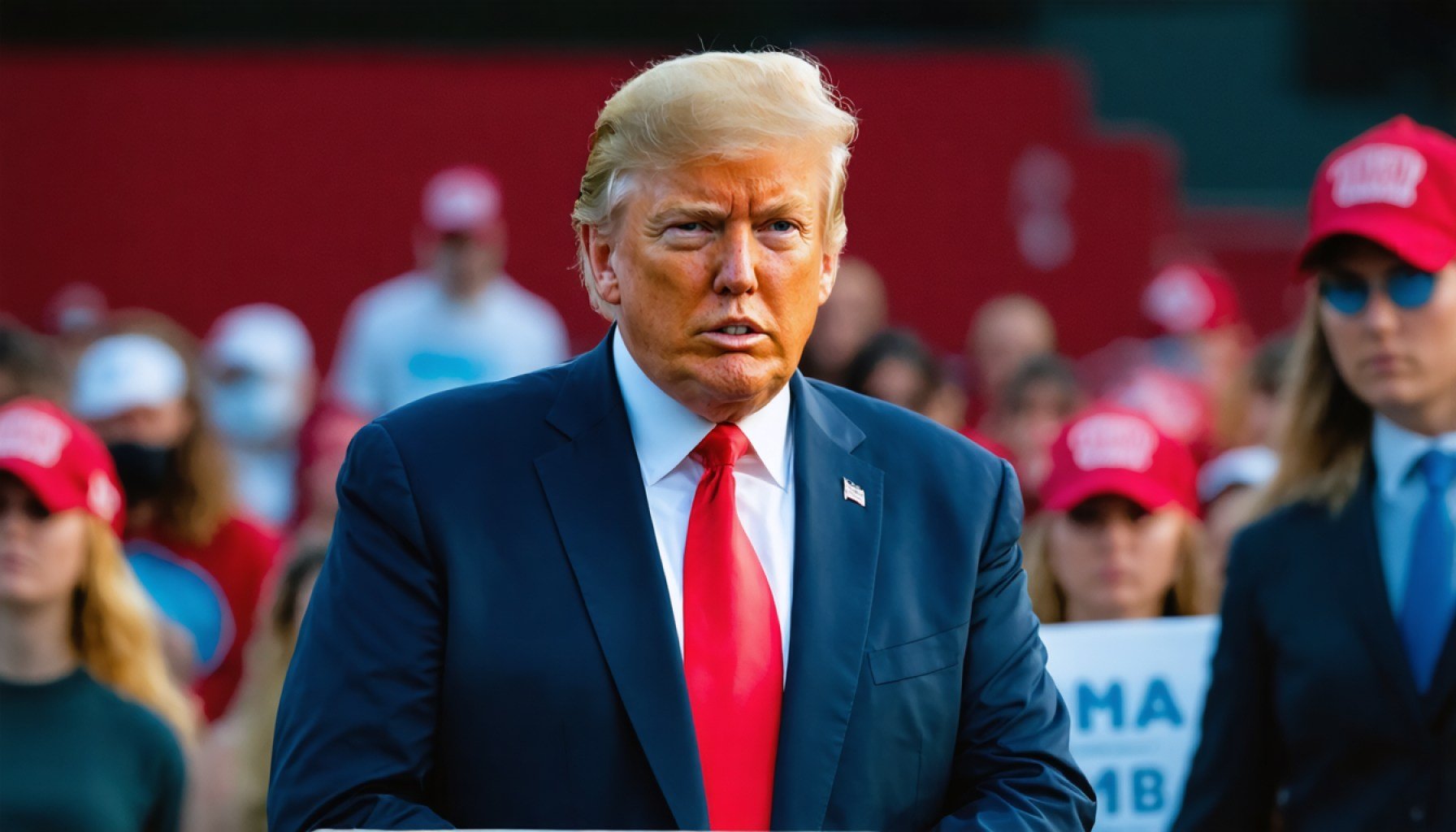- President Trump threatened to withdraw federal funding from states opposing his executive order banning transgender athletes from women’s sports.
- Maine stands firm against this order, citing the Maine Human Rights Act to support transgender student athletes.
- This controversy is part of a broader national debate on gender identity, civil rights, and state versus federal authority.
- States like California and Minnesota oppose the federal directive, while others, such as Wisconsin, have adapted policies to align with it.
- The Department of Education is focusing on Title IX compliance, intensifying the divide between federal mandates and state laws.
- The situation underscores ongoing discussions about fairness, safety, dignity, and societal norms in sports and beyond.
A vivid clash over gender and athletics emerged as President Donald Trump vowed to withdraw federal funding from Maine. In a bold address to Republican governors, he stood firm on the controversial executive order signed on February 5, which aims to bar transgender athletes from competing in women’s sports. He declared his intolerance for “men playing in women’s sports” and warned of financial consequences for non-compliance.
Visualize the Maine State House bathed in dawn’s light, standing steadfast against the growing political storm. Within its chambers, the executive director of the Maine Principals’ Association, Mike Burnham, underscored the state’s commitment to the Maine Human Rights Act. Maine’s schools will continue to respect students’ gender identities—a stance conflicting with federal directives but rooted in local law and human rights.
This pushback is emblematic of a broader national debate as states like California and Minnesota also stand defiant. Yet, other states such as Wisconsin have pivoted, altering policies to restrict athletic participation based on birth gender.
The narrative extends beyond sports, touching on civil rights, state sovereignty, and gender identity. Federally, the Department of Education’s investigations have ramped up, emphasizing adherence to Title IX. The division is stark—some regions embracing Trump’s mandate, others resolutely opposing it.
At its heart, this clash highlights a fundamental question: how to balance fairness, safety, and dignity with evolving societal norms. What remains clear is that the echoes of this decision will reverberate far beyond the playing fields, shaping dialogues on equality and federal authority for years to come.
Trump vs. Transgender Athletes: What This Means for Sports and Society
The Depth of the Debate: Gender, Athletics, and Human Rights
The clash over transgender participation in sports isn’t just a debate about athletic fairness; it’s a complex intersection of civil rights, state vs. federal authority, and evolving societal norms. At the core, states like Maine are standing firm against federal directives, emphasizing the importance of gender identity and the Maine Human Rights Act in their schools. This dedication opposes federal moves and highlights a significant question: how to balance fairness, safety, and dignity with the changing societal landscape?
How-To Steps & Life Hacks: Fostering Inclusivity in Sports
1. Educate & Train: Provide comprehensive training for coaches and school officials on gender inclusivity and sensitivity. This fosters a supportive environment for all athletes.
2. Policy Review: Regularly revisit and update school policies to align with both local laws and broader, evolving societal norms regarding gender identity.
3. Create Safe Spaces: Establish channels for students to express concerns and experiences related to sports participation securely and confidentially.
Real-World Use Cases: Examples of Inclusion
– California: Schools have implemented policies that allow transgender athletes to participate in sports consistent with their gender identity, setting a precedence for inclusive practices.
– Minnesota: The Minnesota State High School League rules permit transgender students to compete according to their gender identity, after potential consultation with parents and administrators.
Market Forecasts & Industry Trends
The ongoing debate could impact how brands and sporting organizations address inclusivity and representation. As support for LGBTQ+ rights builds, there might be increased sponsorship and campaigns centered around diversity, shaping future market trends in athletics.
Features & Pricing: Understanding Title IX Compliance
Adhering to federal guidelines, such as Title IX, requires investments in legal and educational resources. Schools may need to allocate budgets for these measures, potentially affecting funding allocations in other areas.
Security & Sustainability
Ensuring the safety and dignity of all athletes is critical. Schools must implement safeguards against discrimination and bullying. Sustainable practices involve ongoing dialogue and policy evolvement, ensuring alignment with both legal and societal shifts.
Insights & Predictions
The conversation surrounding gender and athletics will continue to evolve. It’s expected that federal and state policies will face scrutiny, with potential compromises emerging over time. Awareness and advocacy will likely increase, encouraging more inclusive sports environments.
Pros & Cons Overview
Pros:
– Promotes inclusivity and respect for gender identity.
– Aligns with human rights principles and local laws.
– Sets a precedent for diversity in sports.
Cons:
– May lead to funding reductions from federal bodies.
– Creates regulatory complexities between federal and state guidelines.
– Potential backlash from differing opinions on fairness in sports.
Controversies & Limitations
The primary controversy lies in the perceived fairness of competition. Critics argue that physical advantages should be considered, while proponents emphasize the rights and identities of transgender athletes. This division challenges the development of universally accepted policies.
Reviews & Comparisons
Comparisons among U.S. states show a varied landscape: while some states embrace inclusive policies, others have implemented restrictions. This diversity highlights differing societal values and the impact of local governance on civil rights.
Quick Tips for Navigating Inclusivity in Sports
– Stay Informed: Keep updated on both federal and state regulations concerning transgender athletes. Awareness aids in proactive policy adjustments.
– Engage the Community: Foster open discussions within schools and communities to create a supportive, informed environment.
– Seek Expert Guidance: Consult with legal and educational professionals to ensure policies are compliant with existing laws and place emphasis on inclusivity and fairness.
To explore more about ongoing initiatives and laws ensuring human rights, you may visit Human Rights Campaign.




















